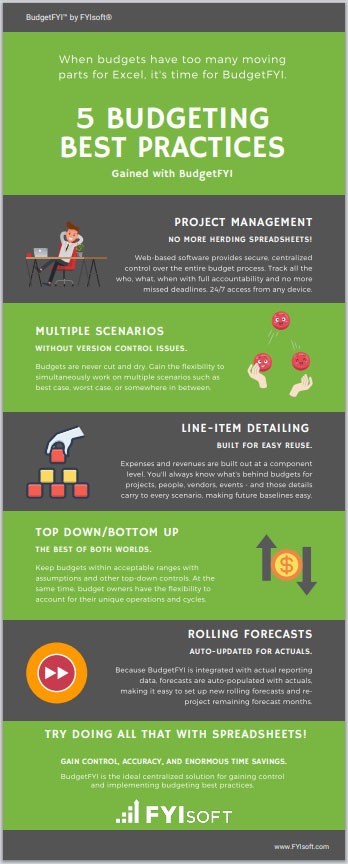If you’re struggling to rein in your company’s budgeting and forecasting processes, you are not alone. The events of 2020 as well as 2021, and the resulting economic meltdown and fallout, have strongly enhanced the thinking that financial leaders across the globe must be able to operate with greater agility when it comes to budgeting and forecasting. But the reality is that many finance leaders are still struggling to gain insight into their business futures.
Whether it’s outdated processes or time-consuming and antiquated entry methods, the confluence of internal and external issues that can contribute to a blurred decision-making process and a feeling that all future financial plans are simply “shots in the dark” can certainly lead itself to an unsuccessful and unrealistic annual budget. So how can finance leaders lasso the wild horse born from uncertain economic futures with greater levels of confidence?
It starts with adhering to budgeting best practices that can be gained by using BudgetFYI. When it comes to traditional financial planning processes, those processes typically rely on analyzing historical data and trends, entering that data manually into Excel spreadsheets, and then running quarterly reports on what already happened to see what might occur in the future.
As we mentioned earlier, 2020 blew that notion out of the water. These processes were already slow to begin with, and to be honest, today’s finance departments do not have the time or economic certainty to place much trust in sluggish processes. The operative term here being economic certainty. With that said, let’s look at five budgeting best practices that can be gained from BudgetFYI. In addition, feel free to download our infographic as a reminder of those best practices.
- Project Management – With BudgetFYI, our web-based software provides secure, centralized control over the entire workflow process. Tracking all of the who, what and when’s with full accountability and no more missed deadlines is as simple as flipping a light switch with 24/7 access from any device. You can say so long to herding spreadsheets.
- Multiple Scenarios – Let’s face it, if 2020 has taught us anything it’s that budgets are never cut and dry. With BudgetFYI, you can gain the flexibility you need to simultaneously work on multiple scenarios at once such as best case, worst case, or somewhere in between. Unlike Excel, you will never have to worry about version control issues.
- Line-Item Detailing – When you adhere to our budgeting best practices with BudgetFYI as your North Star, expenses and revenues are built out at a component level. This means that you will always know what’s behind budgets for projects, people, vendors and events – and those details carry to every scenario, making future baselines ridiculously effortless. It means they are built for easy reuse.
- Top-Down/Bottom Up – Of course you want to keep your budgets within acceptable ranges with assumptions and other top-down controls. With BudgetFYI, it’s a snap. At the same time, budget owners using BudgetFYI also have the flexibility to account for their unique operations and cycles. Now you have the best of both worlds.
- Rolling Forecasts – Because BudgetFYI is integrated with actual reporting data, forecasts are auto-populated with actuals, making it easy to set up new rolling forecasts and reproject remaining forecast months. You’ll no longer have to manually import or upload actual data and can instead focus on better forecasts.
In closing, let’s be clear. The key to creating a flawless annual budget revolves around wanting to be more agile, more streamlined, and using a more modern approach that sits upon a budgeting software product like BudgetFYI that can give you faster, more accurate budgeting, without spreadsheets. Learn more about how FYIsoft and BudgetFYI can help you take your budgeting to the next level.

